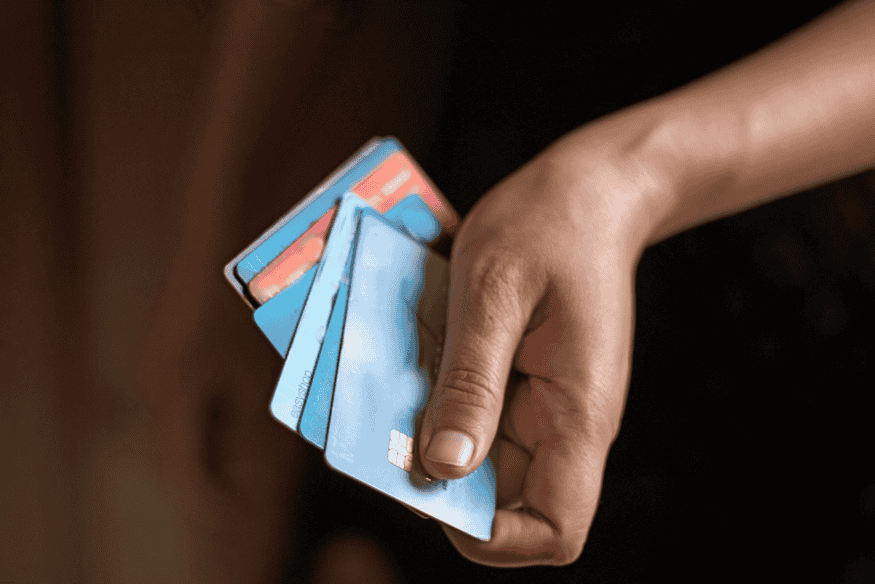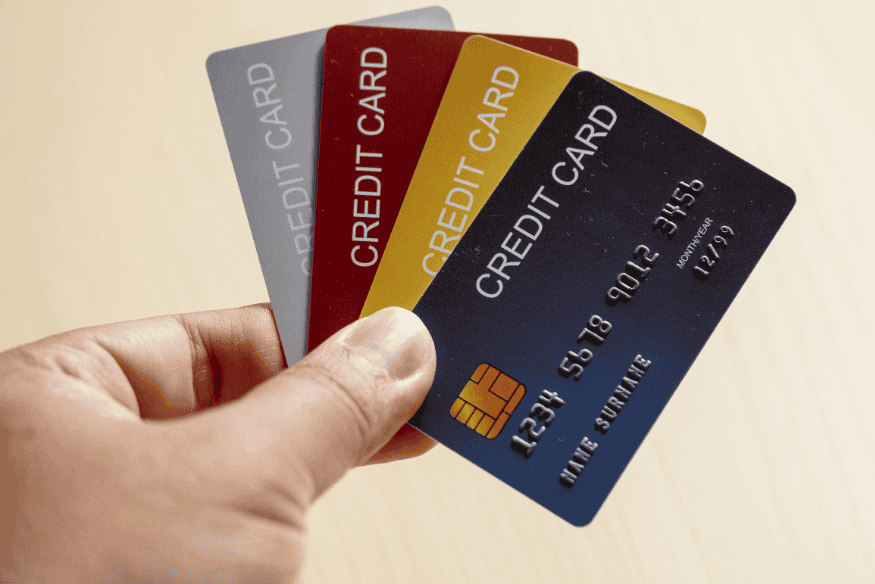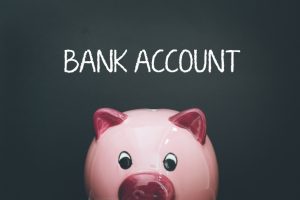Having several credit cards can be both good and overwhelming. With the average American having four cards, it’s key to keep up with your finances.
Experian’s 2021 data shows the average U.S. consumer has three to four credit cards. This makes it vital to organize your finances well. By using a few simple strategies, you can use your cards wisely and keep your finances healthy.
Key Takeaways
- Understand your financial obligations and create a plan to stay on track.
- Prioritize your payments to avoid late fees and interest charges.
- Monitor your credit utilization ratio to maintain a healthy credit score.
- Consider using a credit card management tool to streamline your finances.
- Review your credit card statements regularly to detect any suspicious activity.
The Benefits and Challenges of Having Multiple Credit Cards
Having multiple credit cards can bring benefits like higher credit limits and more rewards. But, it also makes managing your money more complex. It’s key to know both the good and the bad sides before deciding.
Advantages of Multiple Cards
There are several benefits to having more than one credit card. These include:
Increased Total Credit Limit
More cards mean a bigger total credit limit. This gives you more room to spend on big purchases or unexpected costs. A higher limit can also help your credit score by keeping your credit use ratio low.
Diverse Reward Opportunities
Each card offers different rewards, like points, cashback, or travel miles. With multiple cards, you can earn more rewards. For example, use one for groceries and another for travel to get the most out of your rewards.
Potential Pitfalls to Avoid
While multiple cards have their perks, they also come with challenges. Knowing these can help you use your cards wisely.
Overspending Risks
One big risk is overspending. More cards can tempt you to spend more than you should, leading to debt. Always budget and stay within your limits, no matter how many cards you have.
Payment Tracking Complexity
Keeping up with payments for multiple cards can be hard. Missing a payment can hurt your credit score with late fees. To avoid this, set reminders or automate your payments.
How to Manage Multiple Credit Cards Effectively

Managing multiple credit cards can be tough. It’s hard to keep track of due dates, rewards, and balances. It’s key to manage them well to enjoy the benefits without running into trouble.
Creating a Card Inventory System
To manage your credit cards well, start with a detailed inventory system. This means documenting card details and organizing physical cards.
Documenting Card Details
Documenting card details means noting down important info. This includes the card issuer, credit limit, interest rate, rewards program, and due date. Use a spreadsheet or a note-taking app to keep this info handy.
Organizing Physical Cards
Organizing your physical cards means having a special place for them. This could be a wallet or a cardholder. Use card sleeves or labels to tell cards apart easily.
Setting Up a Management Schedule
Having a management schedule is crucial. It helps you stay on top of your credit card duties. This includes a weekly review process and a monthly audit routine.
Weekly Review Process
Make time each week to check your credit card transactions. Look for any suspicious activity and make sure you’re paying on time. This keeps you organized and helps you catch problems early.
Monthly Audit Routine
Every month, do a deeper check of your credit card accounts. Reconcile your statements, check your credit utilization ratio, and plan for the next month. It’s also a good time to review your rewards and think about changing your credit card strategy if needed.
Organizing Your Credit Cards by Purpose
Starting to manage your credit cards well means organizing them by use. This way, you can get the most rewards, make your finances easier to handle, and use your cards wisely.
Categorizing Cards by Rewards and Benefits
It’s key to sort your credit cards by their rewards and perks. You might have cards for cashback on groceries, travel points, or discounts on fuel. This makes it simple to pick the right card for each purchase to boost your rewards.
Strategic Card Usage for Different Expenses
Using your cards smartly for various expenses can really up your rewards game. For instance, use a cashback card for daily needs and a travel rewards card for trips. This strategy can help you earn more rewards.
Designating Primary and Secondary Cards
Choosing a primary and secondary card for different tasks can make managing your cards easier. Use your primary card for everyday costs. Reserve your secondary card for special purchases or emergencies.
Tracking Payment Due Dates and Minimum Payments
To manage multiple credit cards well, watch your payment due dates closely. Missing a payment can lead to late fees and hurt your credit score. By keeping track of due dates and minimum payments, you can avoid these issues and keep your finances healthy.
Setting Up Calendar Reminders
Use calendar reminders to track your credit card payment due dates. You can set reminders on your phone or computer. Try to set reminders a few days before the due date to give yourself time. This simple trick can help you stay organized and avoid late payments.
Automating Payments Safely
Automating your credit card payments can give you peace of mind. Set up automatic transfers from your checking account to your credit card. Always check your accounts to make sure the payments are going through right and you have enough money.
Creating a Payment Schedule
Make a payment schedule to see when payments are due. List all your credit cards, their due dates, and minimum payments. Use this info to make a calendar or spreadsheet of when to pay. This visual tool can help you stay on track and pay on time.
By using these strategies, you can manage your credit card payments well. Remember, paying on time not only saves you from late fees but also helps improve your credit score over time.
Managing Your Credit Utilization Across Multiple Cards

Having multiple credit cards means you must manage your credit use well. Your credit score is greatly influenced by how you use these cards. It’s crucial to handle them wisely to avoid harming your score.
Understanding Credit Utilization Ratio
Your credit utilization ratio shows how much of your available credit you’re using. For example, if you have $10,000 in total credit and use $3,000, your ratio is 30%. Keeping this ratio under 30% is key for all cards and your overall credit.
Keeping your ratio low shows lenders you handle credit well. You can lower your spending or ask for higher credit limits to achieve this.
Balancing Spending Across Cards
It’s important to spread out your spending on multiple cards. Don’t split your expenses equally on all cards. Think about each card’s credit limit and rewards.
Use a card with a high limit for big purchases and another for daily needs. This way, you earn more rewards and keep your credit use in check.
Requesting Credit Limit Increases
Another way to manage your credit use is by asking for higher limits on your cards. This is especially useful if you’re close to your credit limits.
For example, if you’ve used $1,500 of a $2,000 limit, asking for a $3,000 limit can lower your ratio. This can greatly improve your credit score.
Tip: Be careful when asking for higher limits. Some issuers might check your credit, which can temporarily lower your score.
Maximizing Rewards and Benefits from Multiple Cards
Having multiple credit cards means you can earn more rewards. It’s important to know how each card works and how to use their benefits. This way, you can get the most out of your rewards.
Tracking Reward Programs and Points
Keeping track of your rewards is crucial. You need to watch your points or miles, know how you earn them, and remember any rules. Use a spreadsheet or an app to stay on top of your rewards.
Combining Rewards for Maximum Value
Using rewards from different cards can increase their value. You can move points from one card to another or use them for a big reward. Some cards let you combine rewards with other programs. Knowing these options can help you get the most from your rewards.
Seasonal and Rotating Category Strategies
Many cards offer extra rewards in certain categories that change with the seasons. To earn more, you need to know these categories and plan your spending. For example, if you get 5% cashback on groceries in the first quarter, shop for groceries then to earn more.
By using these strategies, you can greatly increase your rewards. Stay updated on the rewards and adjust your spending to get the most from your cards.
Credit Card Management in Finland: Special Considerations
Finland’s credit card market has both local and international providers. This offers a wide range of choices for consumers. To manage credit cards well in Finland, you need to know the local financial scene and the different card options.
Finnish Credit Card Market Overview
The Finnish credit card market is very competitive. Local banks like Nordea and Danske Bank and international companies like Visa and Mastercard offer many cards. Local cards are made for Finnish consumers, while international cards are good for traveling and rewards.
- Local cards offer benefits for the Finnish market.
- International cards are great for traveling and rewards.
Local vs. International Cards for Finnish Residents
Finnish residents can pick between local and international credit cards. Local cards might give cashback on groceries or discounts at local stores. International cards are good for travelers because they have no foreign transaction fees and are accepted worldwide.
- Think about your spending and travel plans.
- Pick cards that fit your financial goals.
Currency Conversion and Foreign Transaction Fees
For those who travel or make international purchases, knowing about currency conversion and fees is key. Some credit cards have competitive exchange rates and low or no foreign transaction fees. These are great for using abroad.
| Card Type | Foreign Transaction Fee | Currency Conversion Rate |
|---|---|---|
| Local Card | Variable | Often less competitive |
| International Card | Low or none | Competitive |
When to Close a Credit Card or Consolidate Debt
Managing multiple credit cards can lead to a decision to close one or consolidate debt. You need to look at your financial situation, understand how closing cards affects your credit score, and check out debt consolidation options in Finland.
Evaluating Underutilized Cards
If you rarely use certain credit cards, closing them might simplify your finances. But first, see if these cards offer benefits like rewards or special APRs. These could be lost if you close the card.
Impact of Closing Cards on Credit Score
Closing a credit card can change your credit utilization ratio and credit age. Remember, closing older cards can lower your credit score by shortening your credit history. Think about this before you close any card.
Debt Consolidation Options in Finland
If you’re dealing with many credit card debts, debt consolidation could help. In Finland, you can look into balance transfer cards, personal loans with good rates, or debt consolidation programs from banks. Make sure to check the details of any option to see if it meets your financial needs.
When considering debt consolidation, keep these points in mind:
- Look at the interest rates and fees of the consolidation loan or card.
- Check if the new loan covers all your debts.
- See if the repayment terms fit your budget.
Digital Tools and Apps for Credit Card Management

Digital banking has brought many tools and apps for managing credit cards. With many cards, it’s hard to keep up with due dates, expenses, and rewards. But, digital tools can make it easier, helping you get the most from your cards while avoiding problems.
Finnish Banking Apps with Card Management Features
Finnish banks have mobile apps for managing credit cards. For example, Nordea’s Mobile Banking app and OP’s Mobile Banking let you track transactions, check balances, and get alerts for due dates and suspicious activity. These apps give a clear view of your finances, making it simpler to manage your money.
Some important features to look for in these apps include:
- Transaction tracking and categorization
- Payment reminders and scheduling
- Alerts for unusual activity
International Card Management Tools Available in Finland
There are also international tools and apps for managing credit cards in Finland. For instance, Personal Capital and Mint are apps that help track expenses, categorize spending, and set budgets. They’re great for people with many cards or those who want to understand their spending better.
| App/Tool | Key Features | Availability in Finland |
|---|---|---|
| Personal Capital | Expense tracking, investment monitoring | Yes |
| Mint | Budgeting, bill tracking, credit score monitoring | Yes |
| Nordea Mobile Banking | Transaction monitoring, payment scheduling | Yes |
Conclusion
Managing many credit cards needs good organization, smart planning, and the right tools. By using the tips and strategies shared, you can get the most from your credit cards. This keeps your finances healthy.
Creating a detailed budget is crucial for managing credit cards. It tracks your spending and stops you from overspending. This is done by knowing the good and bad sides of credit cards, as explained in this article on credit card advantages and.
To manage your credit cards well, limit how many you have. Pay off your balances fully each month. Also, research your card’s terms and conditions. This helps you avoid interest, manage debt, and enjoy rewards.
By following these steps, you’ll manage your credit cards effectively. This shows you’re financially responsible and make smart choices with multiple credit cards.









